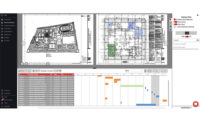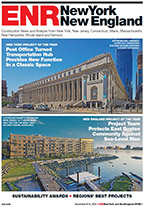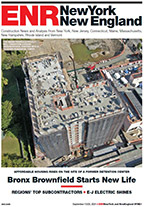Call the Doctor: New System Captures Structural EKGs
Traditional evaluation of structural soundness relies on measurements, calculations, observations and assumptions, but now engineers have a new tool that brings a far greater level of precision to the processes.

Formed in 2008, Easton, Md.-based STRAAM LLC—which stands for “structural risk assessment and management”—offers a service that records movement in any kind of structure, from buildings and bridges to cooling towers and wind turbines. Its instruments report the least tilt, but more powerfully, and yield data its analysts can use to compare the dissipation of vibrations with either the predicted behavior of the structure, given its design and materials, or with baseline measurements captured earlier. Large or changing dampening, particularly in low frequencies, can be “a symptom of things going wrong,” says Alan Jeary, chief technology officer and inventor.

JEARY
The data collector is a small device built around three extraordinarily sensitive accelerometers adapted from missile guidance systems. Simply placed on a high floor for a few hours, the instrument records a structure’s three-dimensional movement in extreme detail. Signals can be induced, but vibrations from ambient sources—gusts of wind, doors closing, footfalls in the halls—usually generate more than enough data to define the dampening characteristics of a structure.
STRAAM’s experts can say whether a structure transfers loads as designed. If not, they can say where unexpected dissipation is occurring.
Michael Horodniceanu, president of New York City Metropolitan Transportation Authority Capital Construction, has tested the service for both constant monitoring and structural analysis of fragile buildings, and he is delighted. “This is a great tool that will allow us to look at buildings differently. It takes a lot of the guesswork out of it,” he says. “We are very excited about continuing to use this system.”




